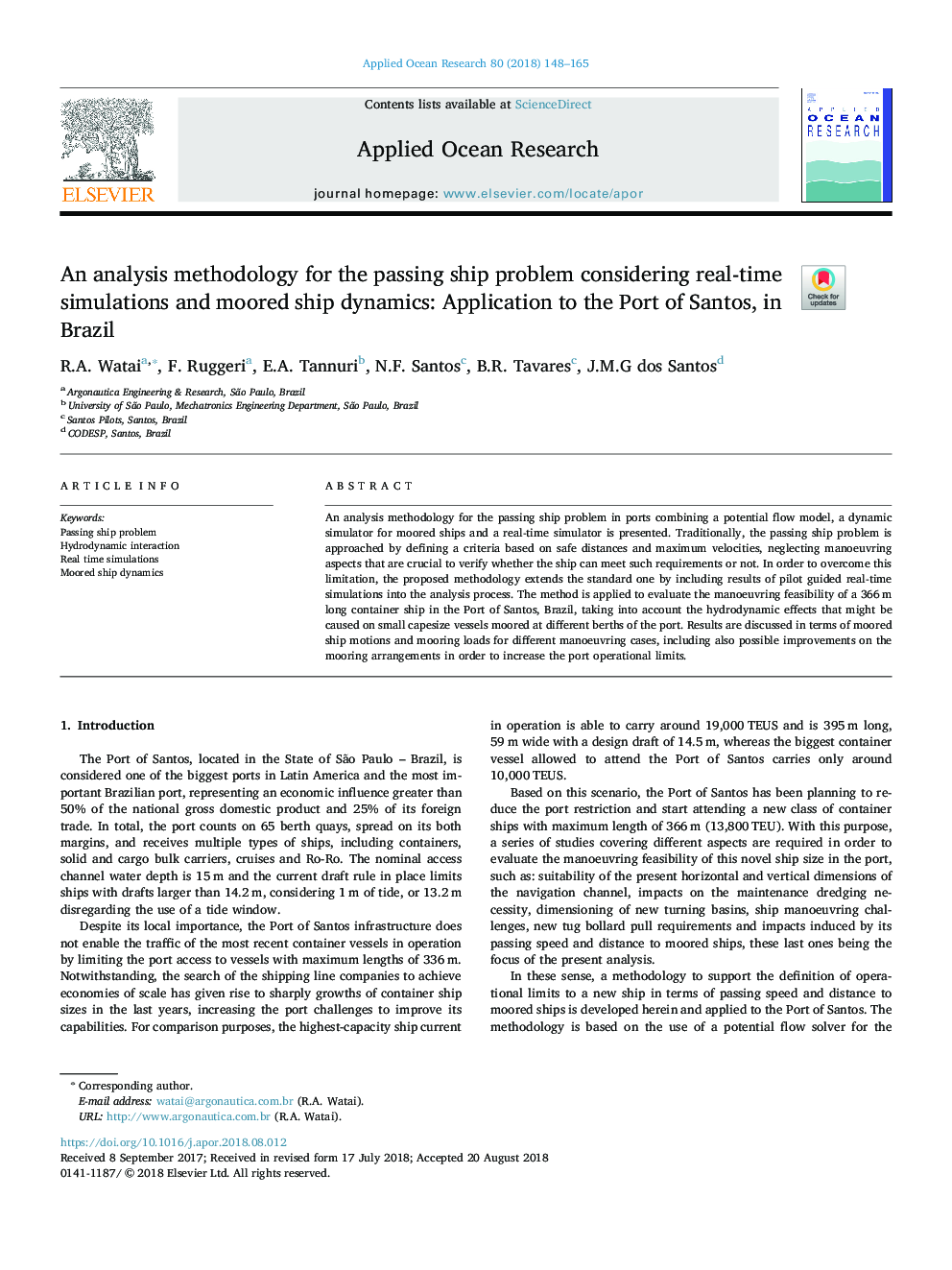| Article ID | Journal | Published Year | Pages | File Type |
|---|---|---|---|---|
| 10142543 | Applied Ocean Research | 2018 | 18 Pages |
Abstract
An analysis methodology for the passing ship problem in ports combining a potential flow model, a dynamic simulator for moored ships and a real-time simulator is presented. Traditionally, the passing ship problem is approached by defining a criteria based on safe distances and maximum velocities, neglecting manoeuvring aspects that are crucial to verify whether the ship can meet such requirements or not. In order to overcome this limitation, the proposed methodology extends the standard one by including results of pilot guided real-time simulations into the analysis process. The method is applied to evaluate the manoeuvring feasibility of a 366â¯m long container ship in the Port of Santos, Brazil, taking into account the hydrodynamic effects that might be caused on small capesize vessels moored at different berths of the port. Results are discussed in terms of moored ship motions and mooring loads for different manoeuvring cases, including also possible improvements on the mooring arrangements in order to increase the port operational limits.
Keywords
Related Topics
Physical Sciences and Engineering
Engineering
Ocean Engineering
Authors
R.A. Watai, F. Ruggeri, E.A. Tannuri, N.F. Santos, B.R. Tavares, J.M.G dos Santos,
